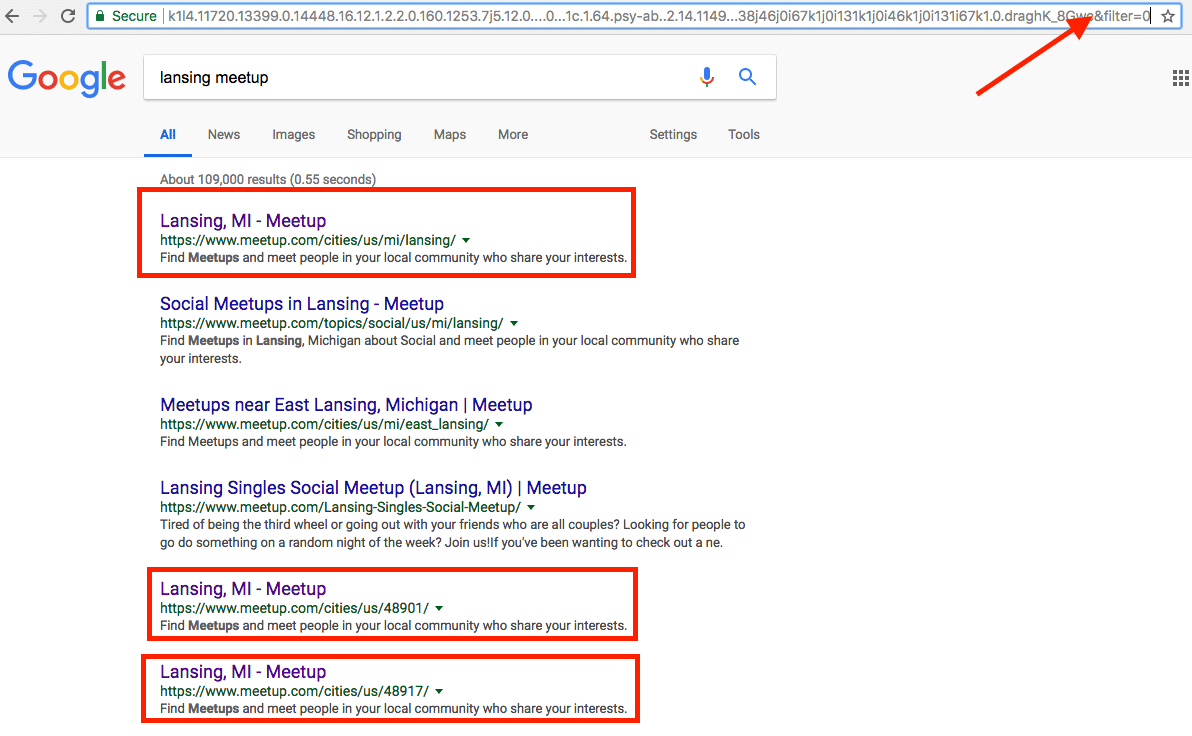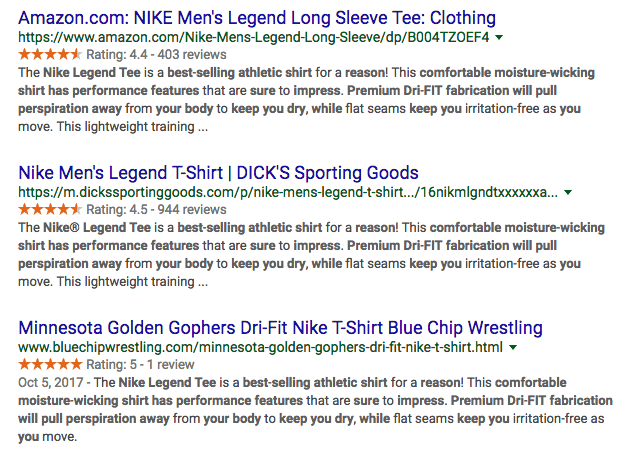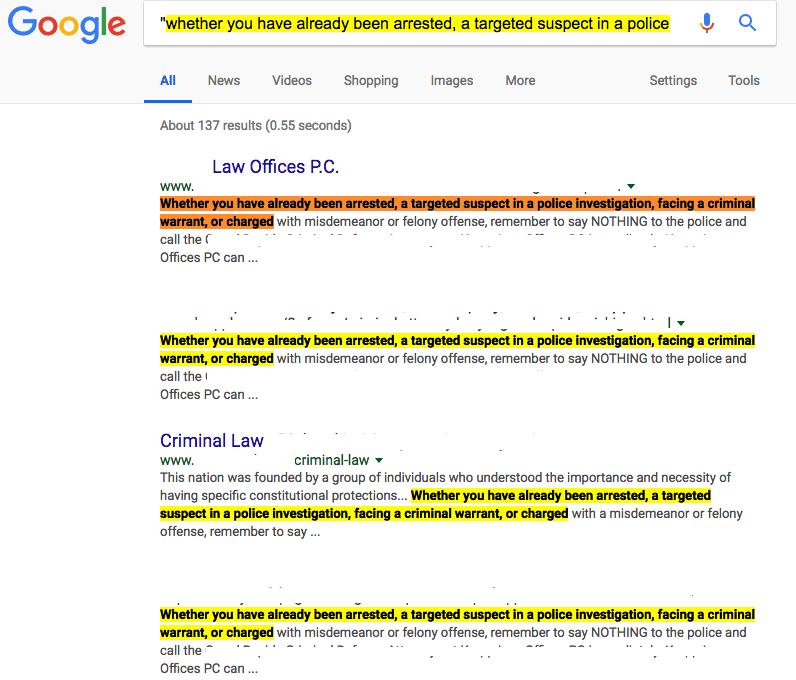
There are two type of duplicate content: duplicate content on different domains and duplicate content on the same domain. They’re both common occurrences and difficult to avoid, except one damages your SEO and your website in general. Here’s what you need to know about duplicate content on different domains and the same domain. Web best practices change fast, so we’ve updated this blog post in 2022 to give you the most accurate assessment of duplicate content on different domains, and how to prevent this problem.
8 Ways Duplicate Content On Different Domains Hurts Your Website
The Duplicate Content Problem
According to Matt Cutts, former head of Google’s spam team, “25 or 30% of all content on the web is duplicate content.” However, most users don’t ever see the 2, 3 or 10 URLs pointing to the same content, because they’re all on the same domain.
Ideally, webmasters use canonical tags, redirects and other methods to reorganize a site and manage duplicate content on the same domain (like webascender.com). Google’s filters and algorithms are also programmed to filter these. When the filter is disabled, multiple URLs leading to the same page sometimes appear.
However, duplicate content on different domains can cause big problems.
Different domains are two completely different sites (like webascender.com and boast.io). Sometimes, duplicate content on different domains is unavoidable, like republishing press releases or guest blog posts. When it’s done properly, this won’t hurt your website. Other instances are more damaging. The following cases of duplicate content on different domains can hurt your website.
- Product Descriptions: Reusing product descriptions from a manufacturer.
- Templates: Buying a fill-in website content template.
- Plagiarism: Stealing competitor’s content.
- Site Scrapers: Site scrapers copying and reposting content.
- Content Repurposing: Recycling content between domains you own.
- Legal Notices: Reusing a site disclaimer or legal notice across different domains.
Problem #1: Keywords
Duplicate content on different domains compete for the same keywords, making it harder for the original to rank highly on search results. This makes it harder for users to find your site, meaning your keyword research and content curation is going to waste. Google also recognizes duplication and may rank all the duplicate sites lower, or even filter out some results completely in favor of original content that is seen as more useful to users.
Google’s instructional Search Console guide states, “In the rare cases in which Google perceives that duplicate content may be shown with intent to manipulate our rankings and deceive our users, we’ll also make appropriate adjustments in the indexing and ranking of the sites involved.
Eliminating duplicate content is one way to improve your rank on Google. Learn about some of the others:
Download the Ultimate Guide to Increasing Your Google Rankings »
Problem #2: Backlinks
Backlinks are another key SEO component. When other reputable sites link to your page, it gives your site more authority and makes it easier to rank for relevant keywords.
However, if a copycat site uses the same content, how do other sites link to yours? And, if your content isn’t original and doesn’t give users anything new, why would they want to? Duplicate content on different domains reduces your authority and credibility, making it difficult to gain site-boosting backlinks.
Problem #3 Mix-ups
There’s a reason businesses protect their names and logos with trademarks. If competing businesses are too similar or products are described the same way, consumers can be confused, and buy from Store B when they’re looking for Store A. Or, if two businesses provide the same information, customers might not care which one they buy from. Duplicate content on different domains, even if it’s allowed by the original publisher like the manufacturer, can cause mix-ups.
Problem #4 Copyright Infringement
You’re not in danger of copyright infringement if you own all the duplicate content on different domains, but you might be at risk for further reproduction. A content thief looking for an easy target will likely choose content that’s already been duplicated, assuming the content owner isn’t paying attention. If you’re using a fill-in template or stealing phrases from a competitor, you might be risking a copyright lawsuit.
Problem #5 Inaccuracy
Generalized content isn’t likely to describe your business, or give your potential online customers any information about you. Worse, it might even make claims that aren’t true. You don’t necessarily have to write the content yourself, you can provide facts about your business and outsource your content, but duplicate content on different domains derived from a template or competitor won’t describe your business at all.
Problem #6 High Bounce Rate
Sites using duplicate content from competitors don’t give users any new or useful information. If a user has already read your content somewhere else, they’ll click away, raising the bounce rate on your site. Besides lowering the conversion rates and usefulness of your site, high bounce rates also indicate low quality to Google bots, which in turn lowers page rank.
Problem #7 Red Flags
If the duplicate content on different domains use the same keywords and the same topics, users are likely to find them side-by-side in search results. If it’s not clear which is the original or why it’s been reposted, it raises suspicions for many users. Is the content stolen? Which one is the original? Which site is safe? Users can’t be sure, and might steer clear of all the replicating sites.
Problem #8 Blacklist
Google won’t blacklist your site simply for incidental duplicate content, but it will blacklist known plagiarists. If you think your content has been stolen, file an infringement notice with Google. Google will remove the site and, in some cases, remove the content thief from Google services altogether.
How to Solve Duplicate Content Problems
Now that you know how duplicate content on different domains hurts your website, how can you prevent it or fix these problems? Even if your site has previously suffered traffic problems or SEO penalties due to duplicate content, you can fix these issues and improve your ranking again.
Rewrite
If a significant portion of your website content appears across multiple domains, the best option is to rewrite or add to the content that you have. As you increase the amount of unique content on the page, the portion of duplicate content will decrease and become less significant.
Rewriting or increasing the content on your pages can have multiple benefits. You’ll eliminate the negative effects of duplicate content, but you can also improve the value of individual pages. Consider the purpose of the page, and how your content might better fulfill the page’s purpose. Use keywords carefully to improve organic search traffic and make the purpose of the page clear.
Syndicate Carefully
If you’ve written blog posts or other content and shared the content with other sites, it’s important to do this carefully. According to Google Search Console, “If you syndicate your content on other sites, Google will always show the version we think is most appropriate for users in each given search, which may or may not be the version you’d prefer.” In order to show which content piece is the original, the syndicated content should include a link to the original. You may also want to use canonical tags on your original content to show which is the original.
Outsource Carefully
Sometimes, writing completely original content for all of your pages can be a big task. If you’ve outsourced some of your content to other writers, it’s a good idea to make sure that your content is original. Use duplicate content checkers to make sure that the content you’re receiving is original. If you find large segments of content copied directly from another page, it’s a good indication that your writer has either used the content elsewhere, or they’ve copied the content from another page.
Highlight Unique Elements
Duplicate content on different domains may occur if you own several, similar online properties, such as different websites for similar businesses within one network. You might copy business descriptions or location descriptions across several pages. If this is the case, highlight unique elements of each location. This might include unique landmarks near a particular location, or specializations for one office compared to another.
If you have duplicate content for a legitimate reason, like guest blogging or press releases, use canonical tags to help prevent confusion. To see if your content has been copied, simply search a phrase in quotes, or use a plagiarism checker like copyscape.com. Google Search Console can also help you find duplicate content problems on your own domain. And, of course, always use original content online.




